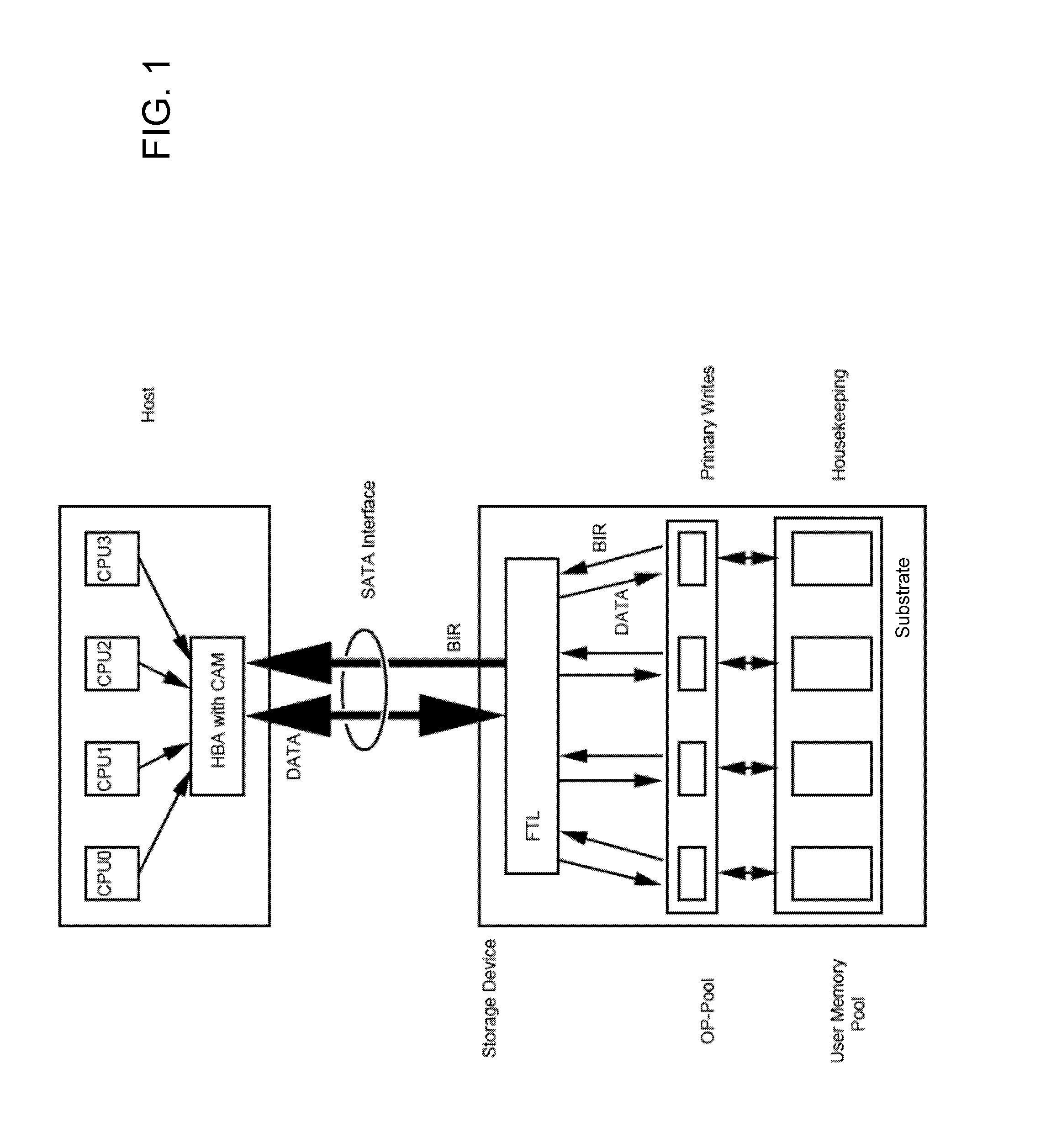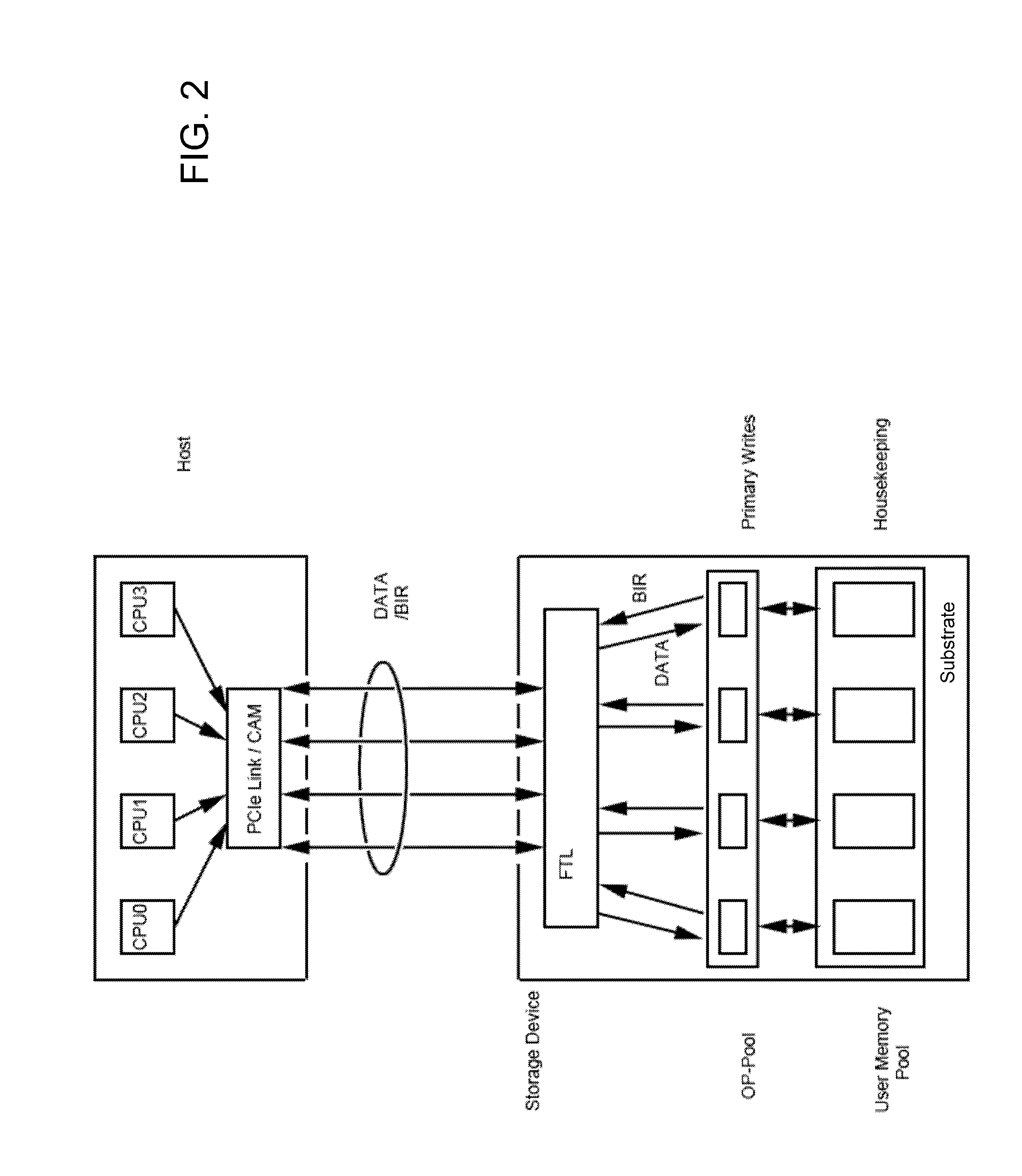Non-volatile memory-based mass storage devices and methods for writing data thereto
a mass storage device, non-volatile technology, applied in the field of memory devices, can solve the problems of inability to read simultaneously from two heads, and inability to achieve the target track
- Summary
- Abstract
- Description
- Claims
- Application Information
AI Technical Summary
Benefits of technology
Problems solved by technology
Method used
Image
Examples
Embodiment Construction
[0043]The current invention provides non-volatile solid state memory-based mass storage devices, for example, NAND flash-based mass storage devices, typically in the form of solid-state drives (SSDs), and methods of storing data on such SSDs. Furthermore, the invention provides a multi-dimensional log-structured file management system for SSDs using an optional multi-channel or parallel system interface. Various aspects of the invention will be described under sub-headers, which are provided for the purpose of organization and do not necessarily limit the scope of the invention.
A. Physical Implementation
[0044]FIG. 1 schematically represents a relatively uncomplicated form of the invention, in which a mass storage device comprises non-volatile solid state memory components, for example, NAND flash memory components (IC chips), that are mounted on a substrate, along with a flash translation layer (FTL). The memory components are arranged in what are termed an “OP-pool” and a “User Mem...
PUM
 Login to View More
Login to View More Abstract
Description
Claims
Application Information
 Login to View More
Login to View More - R&D
- Intellectual Property
- Life Sciences
- Materials
- Tech Scout
- Unparalleled Data Quality
- Higher Quality Content
- 60% Fewer Hallucinations
Browse by: Latest US Patents, China's latest patents, Technical Efficacy Thesaurus, Application Domain, Technology Topic, Popular Technical Reports.
© 2025 PatSnap. All rights reserved.Legal|Privacy policy|Modern Slavery Act Transparency Statement|Sitemap|About US| Contact US: help@patsnap.com



